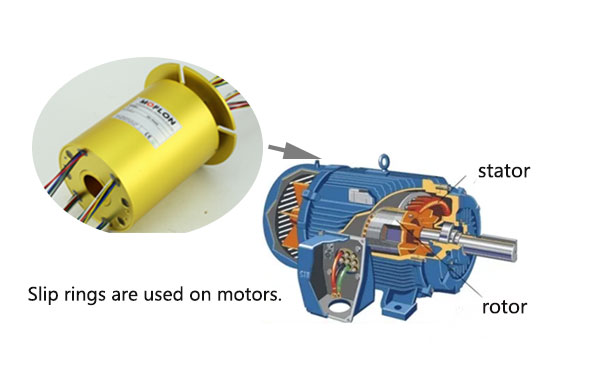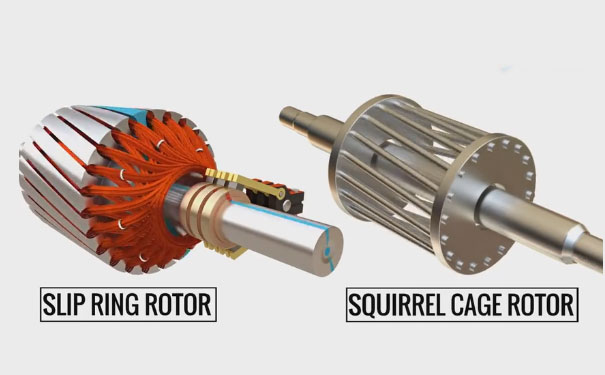The slip ring is an electromechanical device that helps in the transmission of power or data from a stationary object to a rotating object. These can be used in any of the electrical systems in which the transmission of the power and data is required while a continuous rotation. The slip rings function depends on the type of system in which they are to be used.

Based on the functions of the slip ring, it comes in different forms. For the use of the slip ring, there are different factors that need to be considered, such as the construction of the device, starting, operation, speed control and the number of classes of the squirrel cage induction motor. The induction motor slip ring can be defined as an asynchronous motor since the rotor of the motor does not run in a synchronous speed with that of the status pole.
Construction of the motor slip ring
For the construction of the stator, both the slip induction motor and the squirrel cage is the same. One of the main differences that exists in the slip ring induction is for the rotor construction and its uses. Some of the changes can be made in the stator if the slip ring motor is rather applied in a cascaded system. Here, the supply of data for the slave motor in balanced or controlled by the supply from the rotor of a slip ring motor with the help of an external resistance that is mounted on the mechanism.

Features of the slip ring induction motor
The slip ring induction motor comes with a "Phase-Wound" rotor. This rotor type is supplied with a distributed winding which has a three-phase and a double-layer and it consists of a number of coils that are used in the alternators. The core of the rotor is made up with the steel laminations which have a number of slots to be accommodated and formed into a three single-phase winding. All of these windings are then placed 120-degrees apart electrically.
While motor runs under a normal condition, the slip rings are short-circuited automatically with the help of the metal collar which is then forced along with the shaft and as a result, the three rings come in contact with each other. There are three carbon brushes which are further connected to the 3-phase start rheostat externally. These brushes are lifted automatically from the slip rings in order to avoid any loss caused due to friction or wear and tear. Under the same normal conditions, the rotor acts just like the squirrel cage rotor.
These motor slip rings are best compatible for an extremely high inertia load that needs a pull-out torque with a speed which is almost zero and then accelerates to the maximum speed with a least possible current that is drawn in a short time.

Advantages of using a motor slip ring
.One of the main advantages of this type of slip ring is that its speed can be controlled very easily.
.The pull-out can be attained from as low zero RPM.
.It takes a comparatively low starting current, that is 250% - 350%, of a full load power.
.It comes with a very high starting torque as compared to that of the squirrel cage induction motor.
